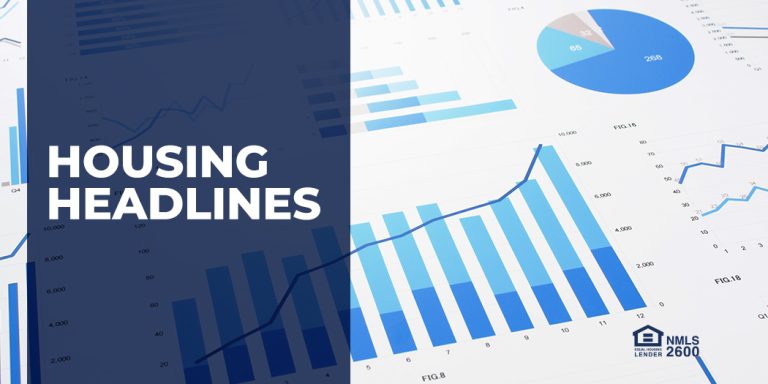Three New Concerns for the Fed
Last Week in Review: Three New Concerns for the Fed

This past week, home loan rates increased slightly from the previous week as we are just a couple of days away from the next Fed Meeting. Let's walk through what happened and discuss what to look for in the week ahead.
As we approach the highly anticipated Fed Meeting this Wednesday, June 15th, their job is growing increasingly tough as the economy slows while inflation remains elevated. Here are three new issues that make the Fed's desire to hike rates expeditiously, very tough.
1. Personal Savings Rate Falling Fast
The Personal Savings Rate, the amount of disposable income people save, was only 4.4% in April, the lowest since the Great Recession in 2008. A low savings rate is a concern because our economic growth depends on consumer spending.
If the consumer retreats and slows spending, it could cause a recession as consumer spending makes up two-thirds of our Gross Domestic Product (GDP). There are many reasons for the personal savings rate declining. Likely the largest reason is inflation. Headline inflation, which contains food and energy costs, is running at over 8% annually and this is weighing on the ability to save.
Another reason for the decline is the desire for many to go out and spend money in a post-Covid world. The first half of the year saw many people spend on leisure and hospitality, which also weighs on the ability to save money.
As it relates to the Fed, they are looking to hike rates to slow demand and get it more in balance with supply, which then lowers prices/inflation. However, if the savings rate remains low or declines further, consumer spending and demand will slow, and inflation will come down on its own. The Fed will need to watch how these numbers look in the months ahead as it determines if and how much to raise rates.
2. Consumer Debt on The Rise
If you see the savings rate decline as consumers continue to spend, it's reasonable to think credit card debt is also on the rise and it is. Last Wednesday, it was reported that revolving credit card debt rose by $17.8B, the second-fastest pace on record.
Moreover, total revolving consumer credit has risen back over $1T to pre-pandemic levels. Why is this a concern? Credit card debt is directly tied to Fed rate hike activity. So, this enormous increase in credit card debt is coming at a time when the Fed is supposed to hike rates, making this debt cost consumers even more.
If you couple the personal savings rate declining with debt rising, it is easy to see why the Fed is in a tough spot trying to hike rates. If the Fed does too much when the consumer is already cutting back, it will elevate recession fears even further.
3. Energy Prices Elevated
Oil is trading at over $120 a barrel, more than doubling in the last 18 months. This has lifted the national average gas prices to nearly $5 a gallon. Moreover, diesel prices remain at all-time highs. This sustained rise in energy is making the cost of daily essentials excessively high and is already starting to have a negative impact on consumer spending. Target recently reported that larger items like televisions and exercise equipment are sitting on the shelves as consumers spend more money to bring home daily essentials.
Elevated energy prices are another problem for the Fed. The Fed has never hiked rates with oil above $100 a barrel. If high oil prices are already forcing the consumer to make other choices and slow spending, then hiking rates would only make that problem worse. As it relates to inflation, Fed rate hikes will not lower energy prices either.
One could argue that high energy costs are doing the job of the Fed...slowing demand and taking money out of the economy.
Bottom line: These themes above will limit how high long-term rates, like mortgages, can go. In fact, prices have been moving sideways over the last 60 days, suggesting that a bottom is in place. What happens at the Fed Meeting may very well cement which side of 3.00% the 10-yr Note will reside.


